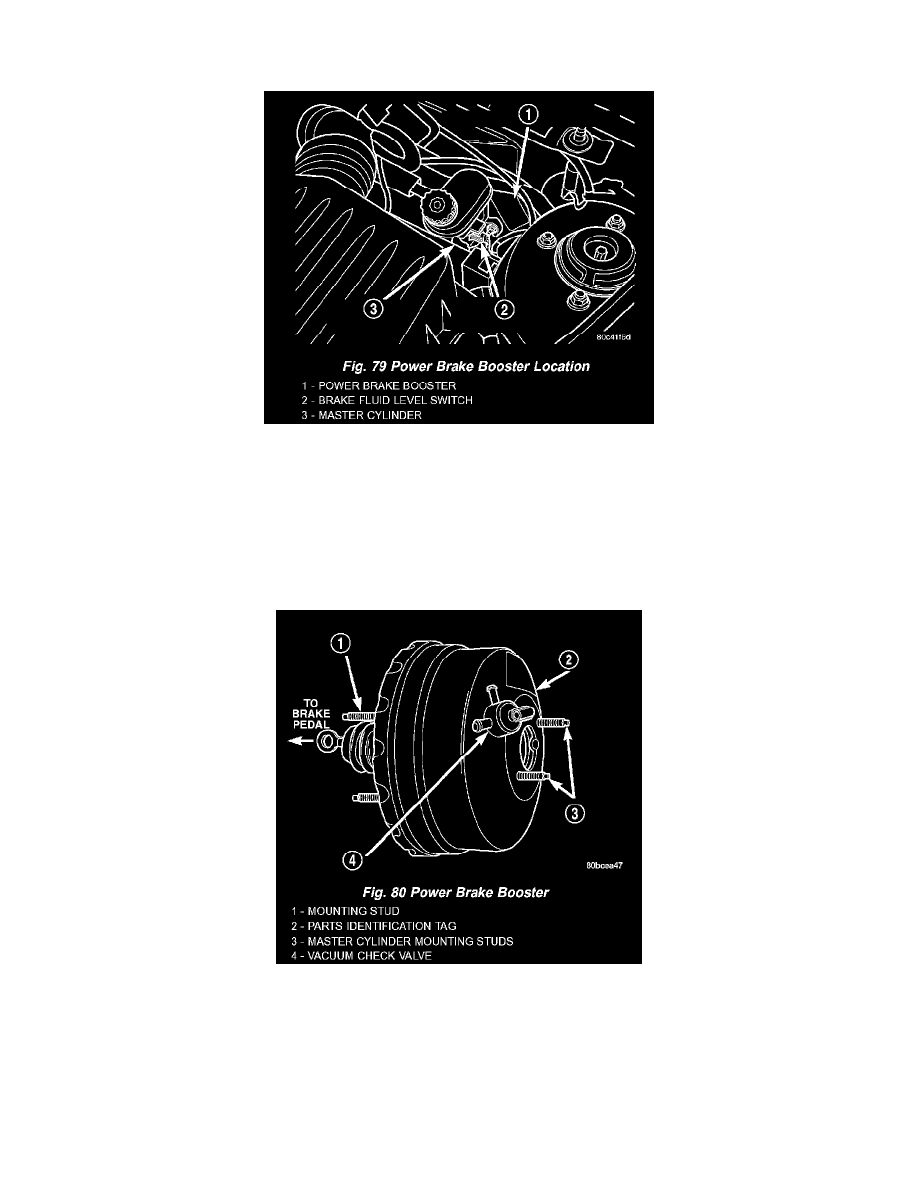PT Cruiser L4-2.4L Turbo VIN G (2004)

Vacuum Brake Booster: Description and Operation
DESCRIPTION
The power brake booster is mounted to the engine side of the dash panel. The master cylinder is bolted to the front of the booster. A vacuum check
valve is also mounted on the front of the booster. A vacuum line connects the check valve to engine source vacuum. The booster input rod extends
through the dash panel and connects to the brake pedal.
There are two different power brake booster designs, although externally they appear the same.
All vehicles use a 205 mm tandem diaphragm power brake booster. The two boosters are internally tuned differently depending on whether the vehicle
is equipped with the standard front disc/rear drum brake combination or the optional front disc/rear disc (four-wheel-disc) brake combination. If the
power brake booster requires replacement, be sure it is replaced with the correct part.
The power brake booster can be identified by the tag attached to the body of the booster assembly. This tag contains the following information:
-
The production part number
-
The date it was built, and
-
The booster manufacturer.
OPERATION
The purpose of the power brake booster is to reduce the amount of force required by the driver (foot-pedal pressure) to obtain the required hydraulic
pressure in the brake system to stop the vehicle.
The power brake booster is vacuum operated. The vacuum is supplied from the intake manifold on the engine through the vacuum hose and power
